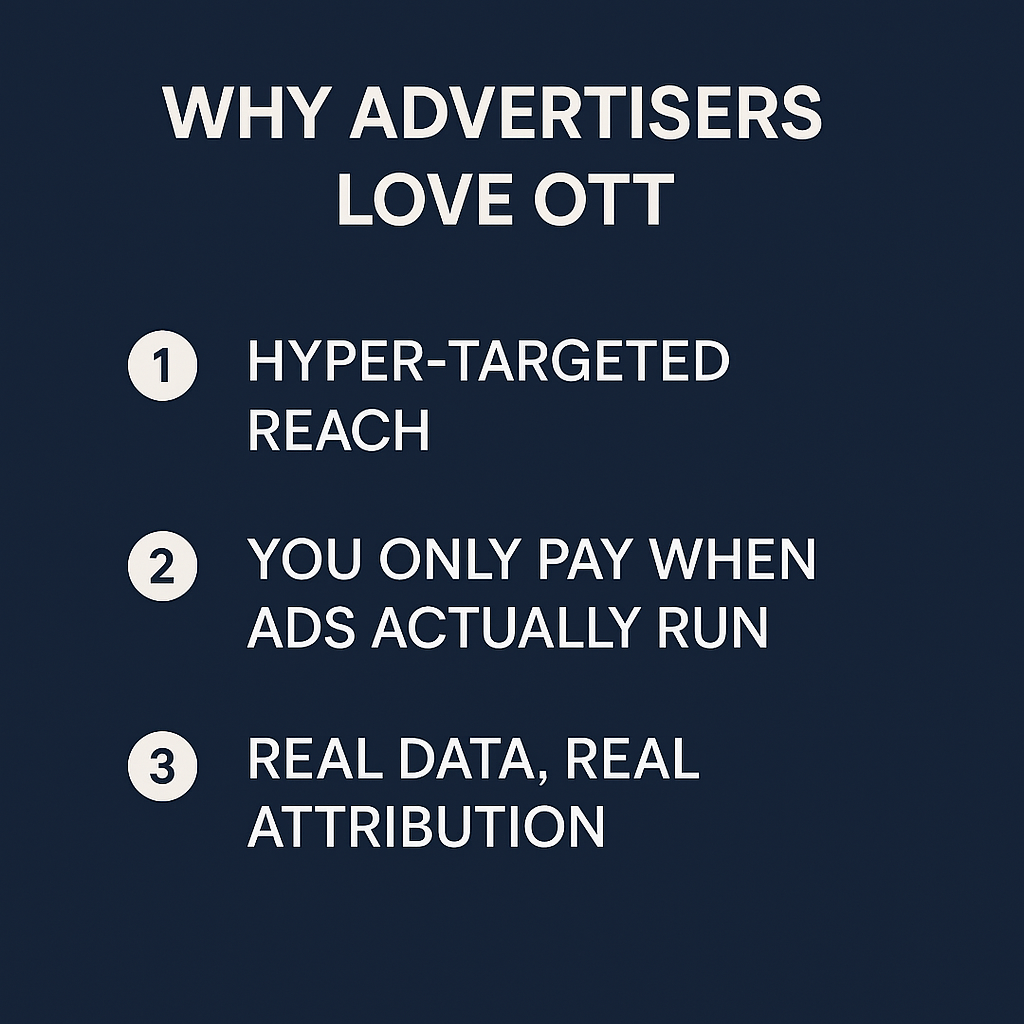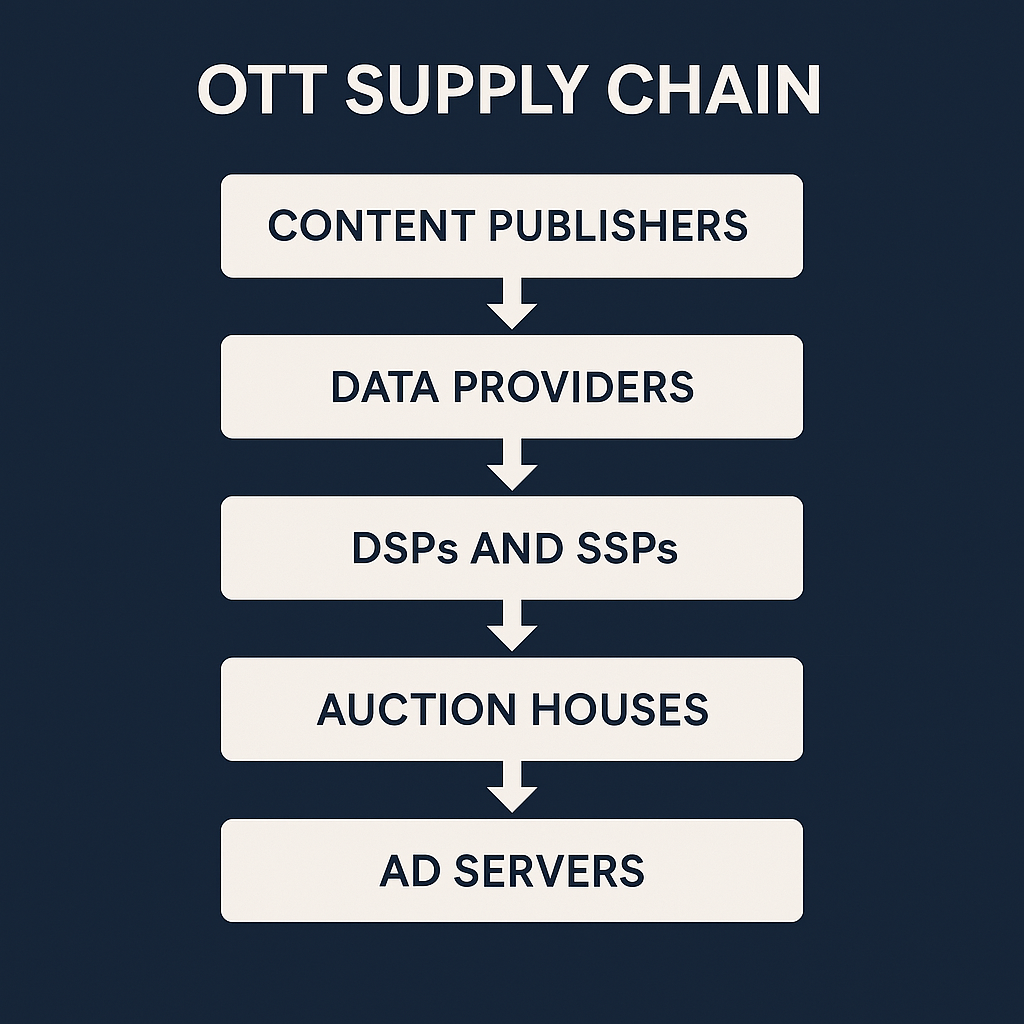OTT, yeah, you know me.
(Okay, maybe that’s not how the song goes…but it should be.)

If you’ve ever tried to Google “What is OTT advertising?” you probably got smacked with a dozen vague definitions, most of which read like they were written by a robot or a TV exec in 2008.
So let’s clear it up, once and for all, no fluff, no filler.
OTT = Over-the-Top (of What, Exactly?)
OTT stands for Over-the-Top advertising, and it got that name for one simple reason: it lets you go over the top of traditional media—like broadcast and cable—and deliver ads straight to streaming devices.
Think Roku, Fire TV, Hulu, YouTube TV. That’s OTT.
Also called CTV advertising when it’s shown on TVs. Confusing? Yeah, a little. But we break it down in another post.
And it’s not just video. OTT can include:
-
OLV (Online Video): Streaming ads served to desktops or mobile apps.
-
Display: Static image ads on sites.
-
Audio: Podcast ads, music apps, e-book platforms—you get the idea.
Why Advertisers Love OTT (and You Probably Should Too)
Let’s get into the good stuff:
1. Target Like a Sniper, Not a Shotgun
Traditional media targets DMAs. OTT lets you go way deeper:
-
Drill down to ZIP codes.
-
Target a one-mile radius around your storefront.
-
Layer on audience data based on household income, home value, refinancing history… we’re talking creepy good levels of precision.
2. You Only Pay When Your Ad Actually Runs
With OTT, impressions are real.
If you see 100,000 impressions on your report, that means 100,000 ads were served to active devices.
With traditional TV, it’s different.
You buy airtime, say during Wheel of Fortune, and Nielsen estimates how many people might be watching that channel at that time. There’s no guarantee the TV was even on. No verification, just statistical guesswork.
OTT removes the guesswork. You get what you pay for.
3. Real Data, Real Attribution
Every OTT ad is tied to an IP address. Add a pixel to your site, and you can track which households viewed your ad and visited your website. That’s attribution traditional TV can’t touch.

Now for the Ugly Part: The OTT Supply Chain
Here’s where it gets messy.
Unlike traditional TV, where you buy directly from the local station and watch your ad run in real time, OTT is a tangled web of:
-
Supply-side platforms (SSPs)
-
Demand-side platforms (DSPs)
-
Ad exchanges
-
Data vendors
-
Ad servers
-
Auction engines
-
Your cousin’s cousin’s ad tech startup (probably)

This complexity creates what we call sequential liability: everyone’s involved, nobody’s responsible.
Want to diagnose a problem with your campaign? Better hope every single vendor in that spaghetti stack wants to cooperate. And since most of them make money on volume, not validity, don’t expect them to rush to eliminate fraud.
TL;DR: OTT Is Powerful… and Wildly Broken
Yes, OTT gives you targeting, control, and measurement that linear TV never could. But it also comes with fragmentation, ad fraud, and shady vendors who’ll promise you the world and deliver recycled inventory from 2019.
Our advice?
Work with an OTT partner who knows the tech, knows the tricks, and actually gives a damn about your results.
And no, OTT is not “simple.” Anyone who says otherwise is either lying… or selling.

